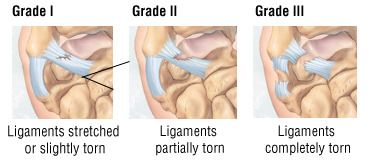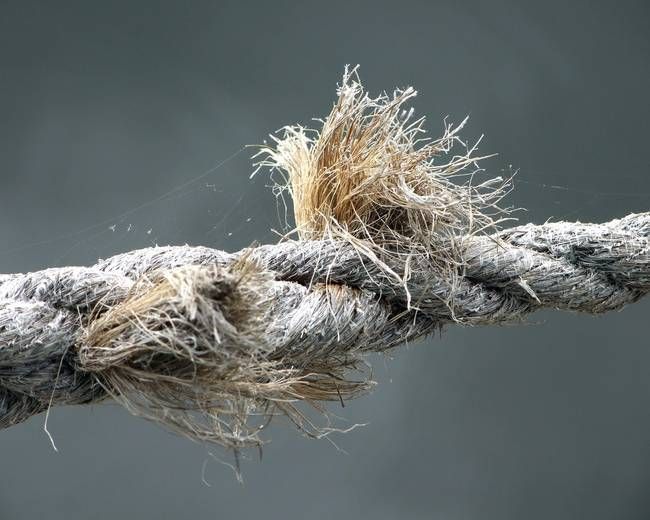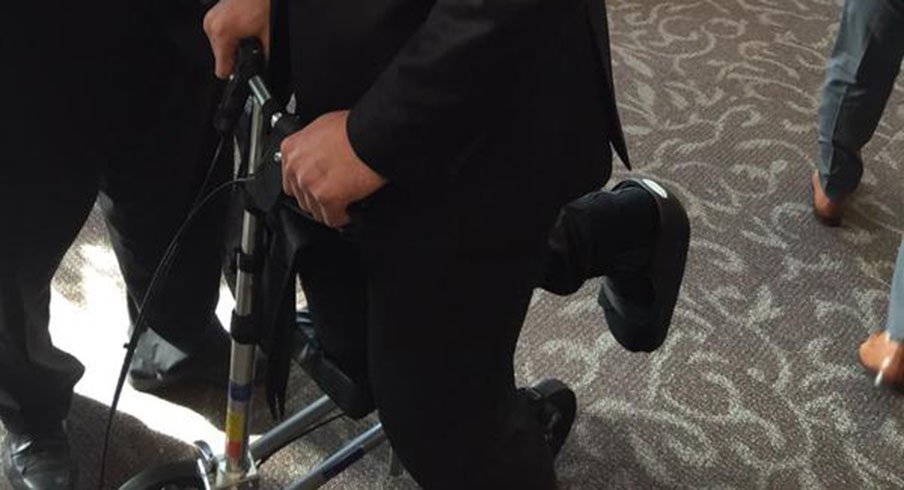Last time we saw a scooter in action, J.T. Barrett was post-operatively recovering from a season-ending ankle fracture. That being said, a little apprehension would be a normal response after seeing All-American defensive end Joey Bosa scooting around at the Ohio State Football Job Fair last week.
Rest assured, while Barrett and Bosa may share a mobility aid, their respective injuries are very different.
Per the university, Bosa has suffered a right foot sprain. A sprain is a description of a ligament injury.
Ligaments are bands of tissue made up of lots of small fibers, like a rope. Their purpose is to provide support where our bodies need it, so they are tough. Ligaments connect one bone to another bone, which means they are prevalent around joints like those in the ankle and foot, where lots of little bones need that support structure. We often think about big joints like the shoulders, knees, and hips, but a joint is actually any place in the body where bones meet together to allow movement.
There are 26 bones in the foot and ankle, and there are 33 joints in there! That calls for a ton of ligament action. Without the ligaments, our bones would just be like a pile of pebbles sitting on each other and shifting around however they please. That would not allow us to even walk, let alone make for effective mechanics in a defensive end.
Bosa could have sprained any one of those ligaments. Sprains are very common in sports. An example of an acute ligament injury is when an athlete is running and rolls his ankle. When the ankle rolls under, the normal job description of the ligament is pushed beyond its capacity, and the ligament tears.
Sprains can be grade I (a few fibers stretch and tear, like a rope fraying), grade II (the tough band of ligament tears part of the way through its thickness), and grade III (the entire thickness of the ligament snaps).
Depending on the grade of the injury and the ligament(s) involved, sprains take anywhere from a couple of weeks to a few months to heal. Bosa’s two week estimation for return-to-play would be accurate for a mild sprain.

The terms “sprain” and “strain” are sometimes confused, but they are actually two separate injuries.
As opposed to a ligament being sprained, a strain refers to an injury of a muscle or tendon. Tendons are literally just a continuation of the muscles to which they belong. They refer to the thicker tissue at the ends of a muscle where the muscle meets a bone to attach.
For example, the Achilles tendon is the thick tissue at the end of the big calf muscles (gastrocnemius, soleus, and plantaris), where the calf muscles come down to attach to the heel bone. You can strain a calf muscle. An injured hamstring muscle is a strain. When you “pull your back” or “throw your back out,” that’s usually a strained muscle in your lower back.
As for sprains, you can sprain your ankle ligaments. You can sprain your MCL (medial collateral ligament; on the inside of the knee). You can sprain your wrist ligaments. The bottom line is that ligaments (bone-to-bone ropes) are sprained, while muscles or tendons (muscle-to-bone cords) are strained.

So, why is Joey Bosa scooting? The scooter is a “knee walker.” It’s an alternative to crutches when an injury needs rest. His sprained ligament needs to be protected (he is in a walking boot) and rested to allow it to properly heal.
Using the scooter prevents him from bearing weight on his foot. It also provides more balance and stability than crutches. It has a comfortable cushion to rest the knee, and what college-aged guy would turn down the opportunity to ride a scooter around campus all the time?
Plus, J.T. Barrett made the knee walker trendy and even created a viral hashtag: #StayScootin.
Here’s hoping Bosa has a speedy recovery from his sprain. In the meantime, let's look forward to another 13.5 sacks, or who knows, perhaps even more. ¯\_(ツ)_/¯
References:
- Brukner, Peter and Khan, Karim. Clinical sports medicine. McGraw Hill, 2006.
-
Thompson, Jon C. Netter's concise orthopaedic anatomy. Elsevier Health Sciences, 2009.


